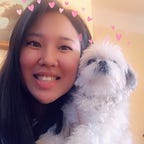Senior Studio
Museums are struggling to achieve their goal of servicing society. What are other alternatives to reach the non-museum goer and provide memorable experiences that build a connection between them and the museum?
Part One: Exposure 🤩👍
Starting off, we were asked to think about how we can change the future of museums behind the museum walls. In order to do so, we partnered with the Carnegie Museum of Art (CMOA)’s “Extraordinary Ordinary Things” exhibition as a case study to propose new solutions of creating experiences that connect all types of communities in Pittsburgh with the artifacts. Some questions that we are trying to address tie with:
- retaining and attracting new and existing members
- new methods of communicating and engagement
- decolonizing exhibits
- leveraging new technologies
By the end of this project, we should design a one-day, public-facing pop-up museum designed that will be stretched from the CMOA to Schenley Plaza to even Craig Street business district and parts of the Forbes Avenue.
Part Two: Research ✍️🧐
“Extraordinary Ordinary Things” is a new exhibit (summer of 2021) that was created by a CMU Design Alumni. Before visiting, we were able to talk with the decorative-arts exhibit designers to get context. In the research phase, there were four main experiences that provided more exposure to our project: CMOA, Carrie Furnace, Greg Manley, and the Carnegie Library.
Carnegie Museum of Art
With a few classmates, we were able to explore the exhibit on September 3rd! Interestingly enough, now that I reflect on our initial exploration phase, all of my experiences have been with other and I assume if I was alone . . . my perspective would be much more different. Throughout my research, you can see that I took a lot of pictures of “things” and of us. The idea of experiencing anything with others is extremely engaging and in a time where covid has caused us to be secluded, I hope that the final exhibit design will bring the same joy and happiness it has for me and my classmates in being together.
As you walk through the exhibition, they are sectioned off based on type of objects ranging from chairs to tables to even lights. At first, all of us observed on our own and tried to process all the extraordinary objects. After making a round, you can see us start to discuss and question whats going on in this who experience. There was a consensus that the process and background behind these pieces made the exhibit way more relatable and interesting as other museums typically make it difficult for people to understand its meaning as they represent such a limited perspective.
Throughout the museum, there were many pieces that resonated with me whether it be due to the materials or just the look of it. I noticed that the work that really stuck with me were ones that had multiple pieces that could stand alone but can also be together. The idea of togetherness and connectivity is very interesting to me as there are many ways to rearrange anything if you have many pieces of it.
Below, you are able to see the works that really caught my eyes. You can notice that they all have individual objects that are interconnected to make the final pieces. Later on in our first assignment, I pick the two artworks that use plates as those objects are used to bring together all types of people through food.
After the museum visit, I started to do more research on Adam Raftery and Molly Hatch who were the artists that worked with plates. Both used the same type of object but were portraying different types of stories. Raftery was using the 12 plates to explain the process of a gardener in a year. This was a metaphorical story to honor his mom’s garden while analyzing the relationship of a gardener with nature. On the other hand, Hatch uses each plate to represent a brushstroke and when they are all together creating a painting and picture.
I started to think about how a person’s cultural plate can vary from the biological term to the type of food that eat. In Pittsburgh, there are diverse groups of people living and sharing cultures which I thought was interesting. Even on Craig street, there are so many different types of cuisines, so I stared to explore this idea of co-creation through your own cultural identity and connecting with others through the Pittsburgh identity. The concept “Plate Your Story” focuses on using participatory design to engage people in 3 ideas which consists of:
- having an installation of all kinds of plates that explain Pittsburgh’s story and then audiences can add their own designed plate to the “story” and continue on the history
- using data visualization to help people make their own plate in which everyone would take home a unique patterned plate
- having a digital interactive plate that allows you to click through and add yourself to the Pittsburgh community and then project those changes on the plates
